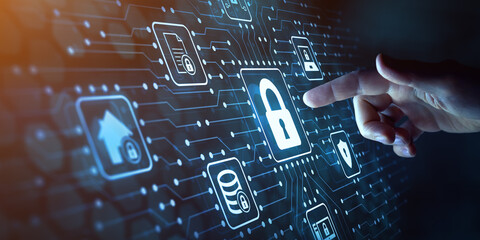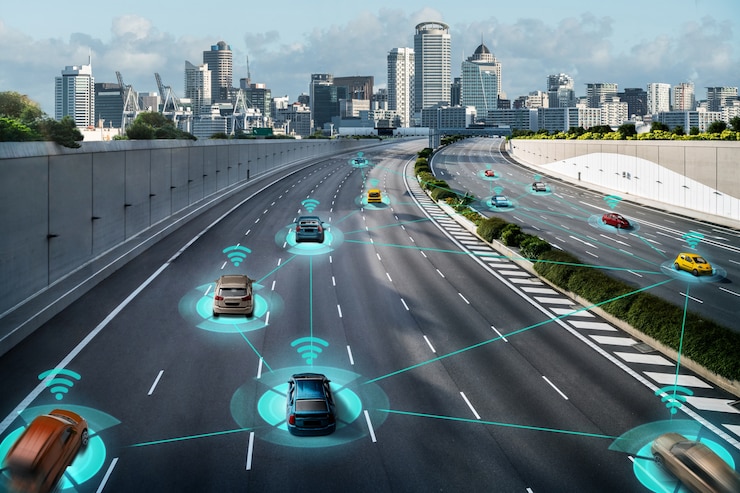The Internet of Things (IoT) is a concept that has been around for some time now. It refers to the interconnectivity of everyday objects with the internet and each other, enabling them to collect and exchange data, and to perform tasks autonomously. The IoT has the potential to revolutionize the way we live, work, and interact with our environment.
 |
| Internet of Things(IOT) |
One of the main benefits of the IoT is its ability to increase efficiency and productivity. By connecting devices and appliances, businesses can optimize their processes and reduce costs. For example, smart factories can use sensors and connected devices to monitor production lines, adjust machine settings, and predict maintenance needs, leading to improved efficiency and reduced downtime.
 |
| Smart Factory using Inter of things (IOT) |
Another major advantage of the IoT is its ability to enhance safety and security. By connecting devices such as cameras, sensors, and alarms, the IoT can help to detect and prevent incidents such as fires, burglaries, and accidents. For example, a smart home security system can detect when a door or window is opened, and send an alert to the homeowner's smartphone.
 |
| Smart door |
The IoT also has the potential to improve our health and well-being. Wearable devices such as smartwatches and fitness trackers can monitor our physical activity, heart rate, and sleep patterns, enabling us to make more informed decisions about our health. Medical devices such as pacemakers and insulin pumps can also be connected to the internet, allowing doctors to monitor patients remotely and adjust treatment plans as needed.
 |
| Smart watch for our health and well-being |
However, with these benefits come some concerns. One of the main issues with the IoT is privacy and security. With so many devices connected to the internet, there is a risk that personal and sensitive information could be compromised. It is essential that manufacturers take the necessary steps to ensure that their devices are secure and that data is encrypted.
 |
| Data is secrued by Encryption |
Another challenge with the IoT is the lack of standardization. With so many different devices and protocols, it can be challenging to ensure that they all work together seamlessly. The industry needs to work on developing universal standards to ensure interoperability and ease of use.
 |
| Challenging for Companies |
Despite these challenges, the IoT is poised to continue its rapid growth in the coming years. As more devices become connected to the internet, the potential applications of the technology are virtually limitless. From smart cities to connected cars, the IoT is transforming the way we live and work. As such, it is important for individuals and businesses alike to stay informed about the latest developments in the field and to take advantage of the opportunities that the IoT presents.
 |
| Rapid Growth |
One of the most exciting applications of the IoT is in the development of smart cities. By connecting infrastructure such as traffic lights, streetlights, and waste management systems, cities can improve efficiency, reduce congestion, and enhance public safety. For example, smart traffic lights can use real-time data to optimize traffic flow and reduce travel times, while connected streetlights can adjust their brightness according to the level of activity in the area, saving energy and reducing light pollution.
 |
| Smart city |
The IoT is also driving the development of autonomous vehicles. By connecting vehicles to the internet and to each other, self-driving cars can communicate with traffic lights and other infrastructure to optimize their routes and avoid accidents. This technology has the potential to transform transportation, reducing congestion, and improving safety.
 |
| Autonomous car sensor system concept for safety of driverless mode of car control |
In addition, the IoT is being used to improve sustainability and reduce environmental impact. By connecting buildings, energy grids, and other infrastructure, the IoT can help to optimize energy consumption and reduce waste. For example, smart thermostats can automatically adjust temperature settings based on occupancy patterns, while smart grids can balance energy supply and demand to reduce carbon emissions.
 |
| Reduce carbon emissions |
One of the biggest challenges in the development of the IoT is the management and processing of the vast amounts of data that it generates. As more and more devices become connected, the amount of data that is generated will only continue to grow. To address this challenge, new technologies such as artificial intelligence and edge computing are being developed to enable real-time data processing and analysis.
 |
| Artificial Intelligence |
Finally, as the IoT continues to grow, it is important to ensure that it is inclusive and accessible to all. There is a risk that some people may be left behind, either due to a lack of access to technology or due to insufficient digital literacy. It is important that governments and businesses work to address these issues and to ensure that the benefits of the IoT are available to all.
 |
| Business work |
In conclusion, the Internet of Things has the potential to transform the way we live, work, and interact with our environment. It is an exciting technology that is driving innovation in a wide range of industries, from manufacturing and transportation to healthcare and sustainability. However, it is important to address the challenges and risks associated with the technology, such as privacy and security, standardization, and data management. By doing so, we can ensure that the IoT continues to drive progress and improve the quality of life for people around the world.
Comments
Post a Comment